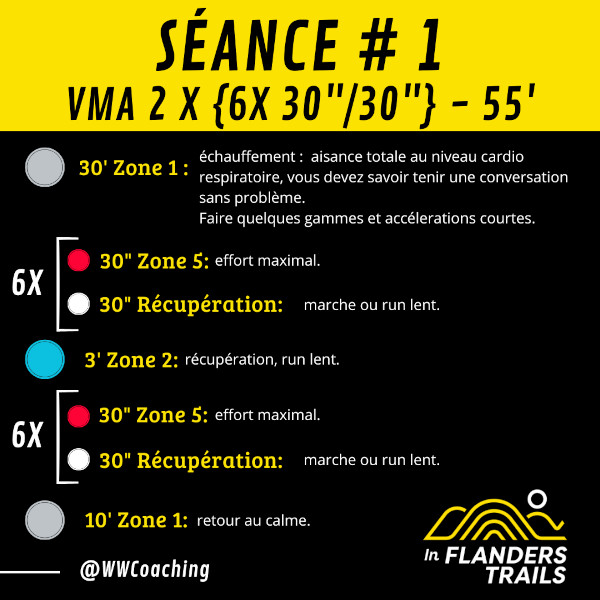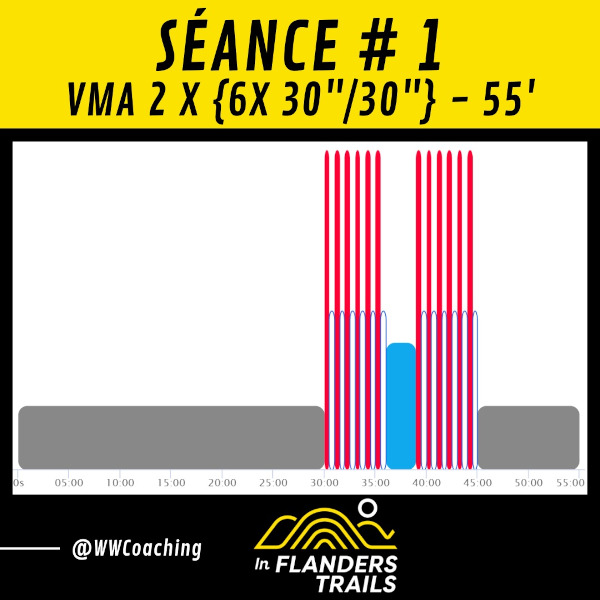
WORK AT THE THRESHOLD : 3X 8' AT THE THRESHOLD / 2' RECOVERY
What is the threshold ?
- “This is the running speed that a runner can maintain for 30 minutes to 1 hour.
- “According to Billat et al. (2003), a “comfortably difficult” pace.
It is located between your fundamental endurance and your VMA. You should run at around 85% of your VMA, where we will use the anaerobic route.
Objectives of threshold work :
- Improved performance so run at higher intensity for longer.
- Lower the anaerobic threshold through training.
- Help the body recycle muscle acid more effectively.
Coaches’ advice :
- Keep the same pace over the 3 work phases at the threshold.
- Respect recovery times
- In feeling, the effort is difficult and speaking becomes almost impossible
Location :
This session can be done on all 9 circuits of the In Flanders Trail application.
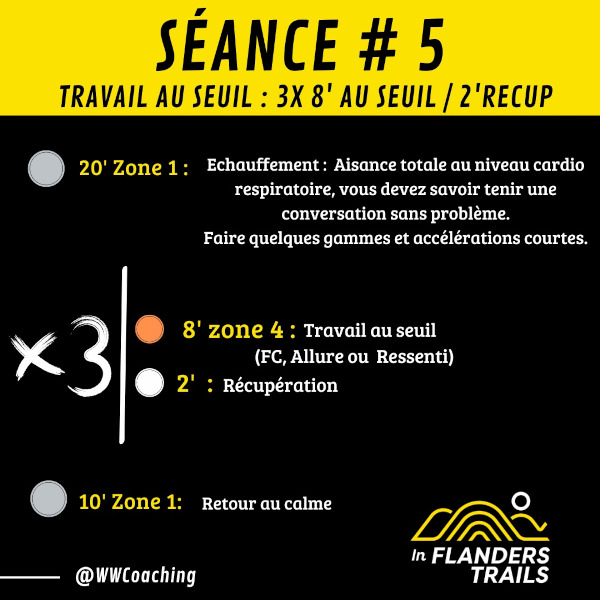
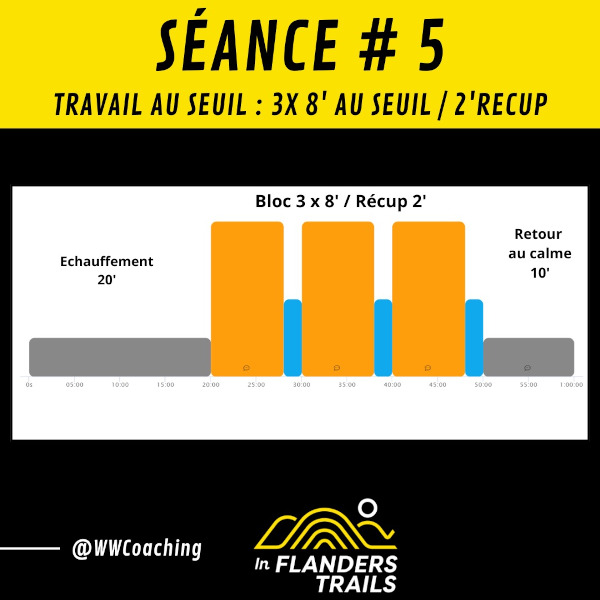
Cadence work: 3X (5'I2 / 3'I4 / 2' Recovery)
What is cadence?
This is the number of steps per minute taken by the runner. You can find it in the statistics of connected watches or associated applications. It is expressed in PPM (not per minute). Studies estimate that an ideal cadence is between 170 and 190 PPM.
Objectives to improve your cadence:
- Performance improvement
- Race economy
- Injury prevention
Coaches’ advice:
- Use a metronome or a playlist to set your steps to the right cadence
- Changing your pace takes time, increase it gradually
- Do not confuse cadence and running pace. It is entirely possible to run in place (pace 0 km/h) with a cadence of 170 ppm!
Location:
This session can be done on all 9 circuits of the In Flanders Trail application.
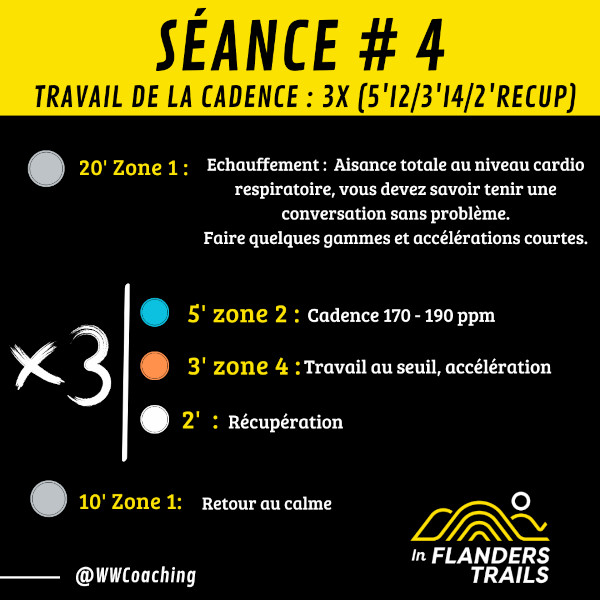
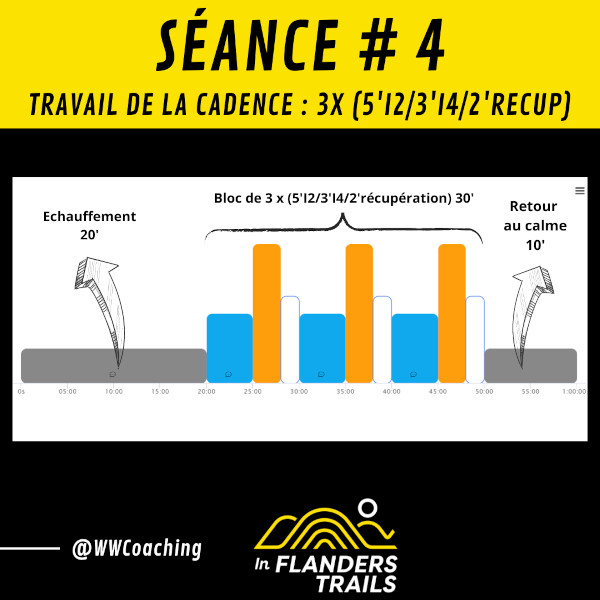
TEMPO TRAIL PYRAMID 1'-2'-3'-4'-3'-2'-1'
What is Tempo trail?
It means working at an intermediate pace, neither too slow nor too fast but getting as close as possible to the anaerobic lactic threshold (Threshold at which we accumulate more lactic acid than we eliminate), without entering it. The pace is generally between 10 km and half-marathon, i.e. around 90% HR Max. It is a mixed workout, combining both speed and endurance. It can be worked in intervals or continuously.
Objectives of the session
Work on the anaerobic lactic threshold without reaching it. By staying below this limit, the body adapts and improves its ability to eliminate lactic acid, gradually pushing back (over the sessions) this threshold. Increase your running pace in competition while generating less fatigue.
Coaches’ advice
Keep the same pace during the tempo work phase. If necessary, work in zone 3 for the first session, the whole point being to maintain the same tempo throughout the session.
Location: This session can be done on all 9 circuits of the In Flanders Trails application.

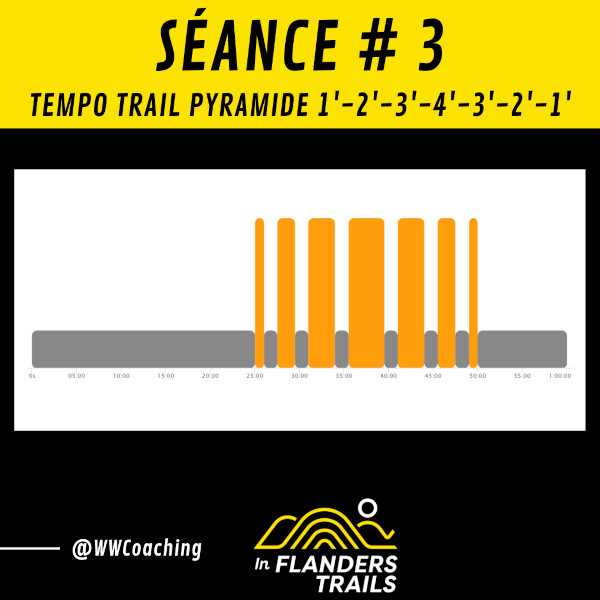
What is Jerk?
It consists of a series of back and forths on a medium hill without technical difficulty, while going increasingly faster on the descents. We generally divide the session into 3 blocks of 3, 4 or 5 round trips depending on the level. We will then try to keep the same time uphill throughout the session, but to accelerate block after block on the downhill.
Objectives of the session
- Develop cardio respiratory endurance
- Perform back and forth without interruption
- VO2 max work adapted to trail running
- Work on mental resistance
Advice from coaches
- Adapt the number of repetitions per block according to your level (3,4 or 5 repetitions)
- Try to maintain the same speed uphill during the blocks
Location: this session can be done on all 9 circuits of the In Flanders Trails application
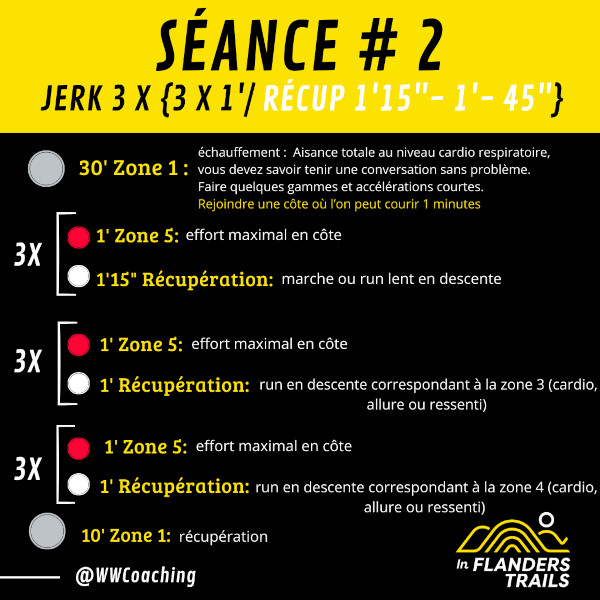
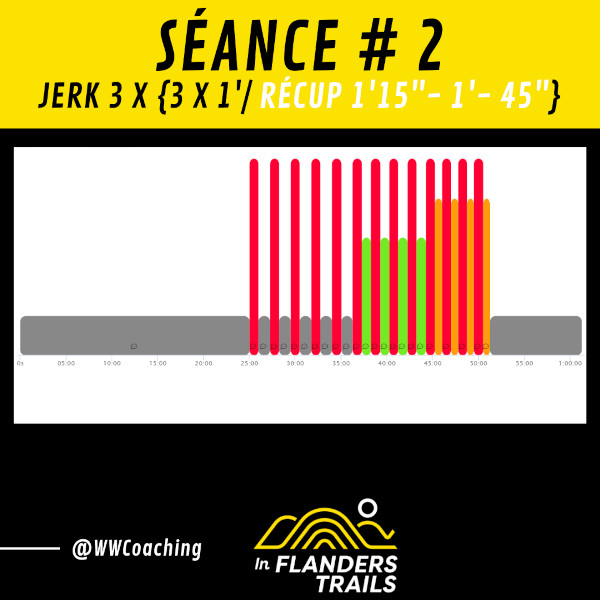
Session objectives
- Develop cardio respiratory endurance
- Work on running technique: ranges, proprioception, strides, posture
- Learn to recognise training zones by feel
- Stimulate the anaerobic pathway through intense effort
- Improve speed
- Work on mental stamina
Coaches' advices
- Adapt the number of sets according to your level
- Try to maintain the same speed when moving through zone 5
Location
This session can be run on all 9 Espace Trail circuits.
